What's the difference between freshwater Ak and Edison pearls ?
"Freshwater akoya", a new variety of pearl, has become the most popular variety in the pearl industry in the past two years. It itself was born with controversy. Many people questioned that it was suspected of stealing the popularity of Japanese akoya, and many people praised it without hesitation, calling it the pride of domestic products. Today, I will use this article to explore the past and present of "Feshwater Akoya".
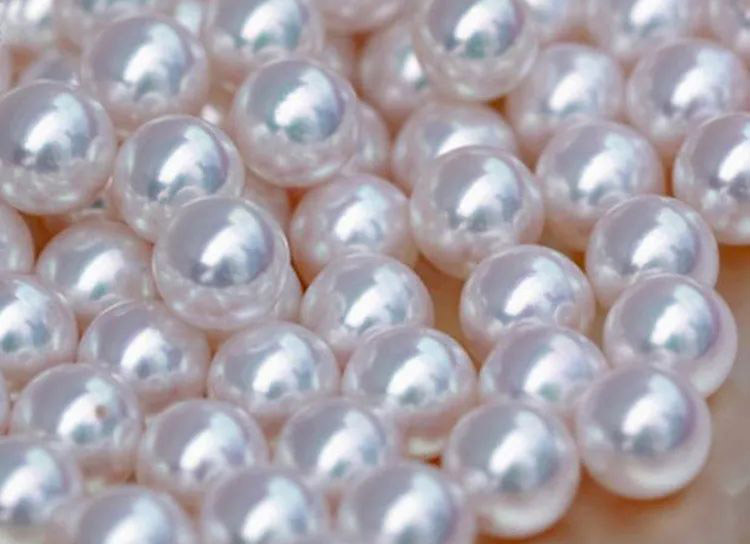
Freshwater Ak loose Pearls
In fact, strictly speaking, freshwater akoya is a kind of freshwater nucleated pearl. It is not the same type of pearl as Japanese akoya. It is produced from the triangular sail clam just like the Edison pearl.
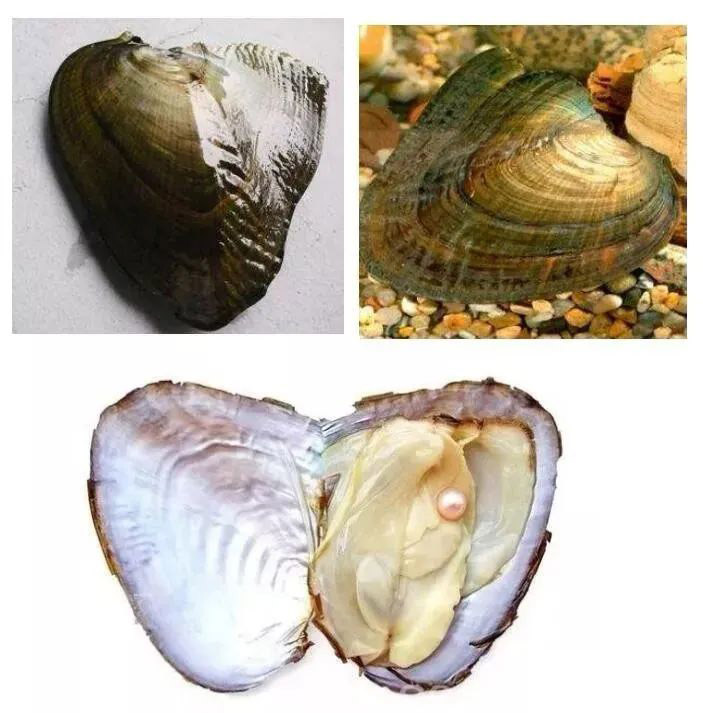
Since this type of pearl has no official scientific name yet, everyone calls it "fresh water akoya". It is a type of freshwater pearl first developed and cultivated by a company in Zhejiang. It is a new type of freshwater pearl with nuclei. It first appeared on the market around the end of 2017. The quality of the first batch of pearls produced was not ideal, and the quantity was relatively small, so they were not well recognized in the market. However, with the advancement of technology research and development in the past two years, the quality has gradually stabilized. The good quality is almost the same as that of Japanese akoya.
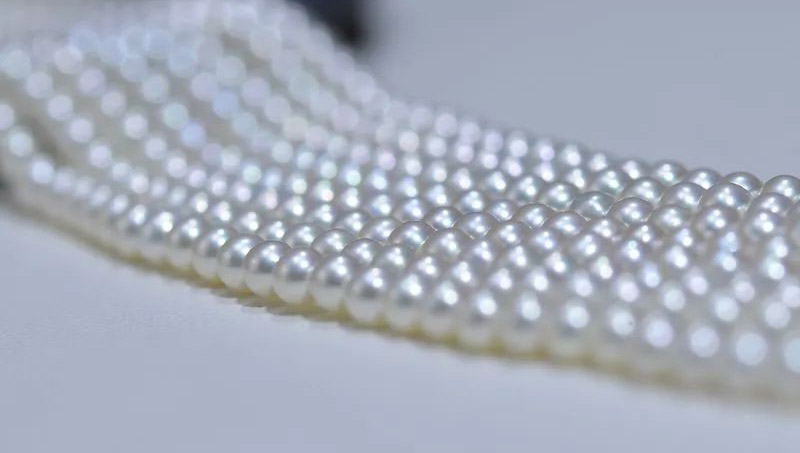
Freshwater Akoya pearls necklace
Many who promote Japanese akoya pearls even call this a fraud, but in my opinion, the problem is certainly not so serious. Because there is no official official name yet, because the appearance and quality are similar to akoya, it is called freshwater akoya. On the other hand, it is also for the convenience of consumers to identify, because it is similar to seawater akoya in terms of size, specification and quality appearance. Pearl is particularly similar, and it has the qualifier freshwater in front of it. I believe that most consumers who know about pearls will not misunderstand this.
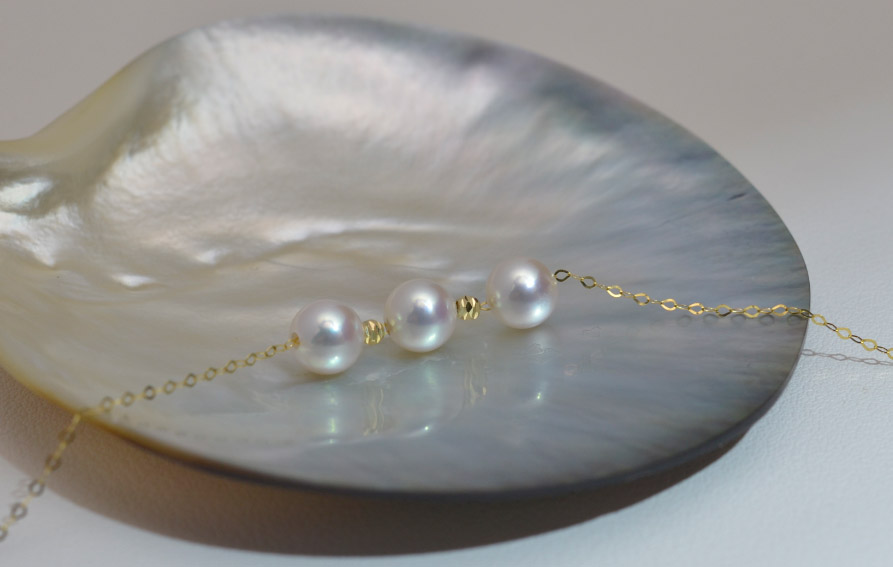
Freshwater AK necklace
The traditional Akoya pearls refer to the pearls produced in the scallops, and the scallops are called "あこや" in Japan. Since the Japanese pronunciation is Akoya, when you look at them together, it gives people the feeling that they are only in Japan. In fact, the name does not have the characteristics of the place of origin.
The ancestral home of Akoya pearls can be traced back to China. As early as the Song Dynasty, jewelers in Hepu, Guangxi had many collectors of Marquis shells, and it was they who discovered the earliest Akoya pearls. Moreover, there are places where seawater akoya is cultivated in China, so it is not only Japan that has akoya pearls. It is undeniable that the Japanese seawater pearl market is more standardized and refined than domestic ones, but one cannot blindly think that the quality of Japanese seawater pearls is necessarily better than domestic ones.
Breeding method of "Freshwater akoya"
Although it, like Edison pearls, is a freshwater nucleated pearl. But the way of breeding is still different.
Edison pearls are implanted into the mussels when they are larvae. Unlike seedless freshwater pearls, a mussel can only produce one Edison pearl.
For "Freshwater Akoya", two years after the growth of Edison pearls, the mussel body was opened again, and six bead nuclei were implanted in the lateral mantle of the pearl oyster. This process is very technically difficult, because improper operation can easily lead to The mother oyster dies. Improper implantation of the bead nucleus will directly affect whether the secretion of nacre is even or not, and affect the quality of subsequent pearl growth.
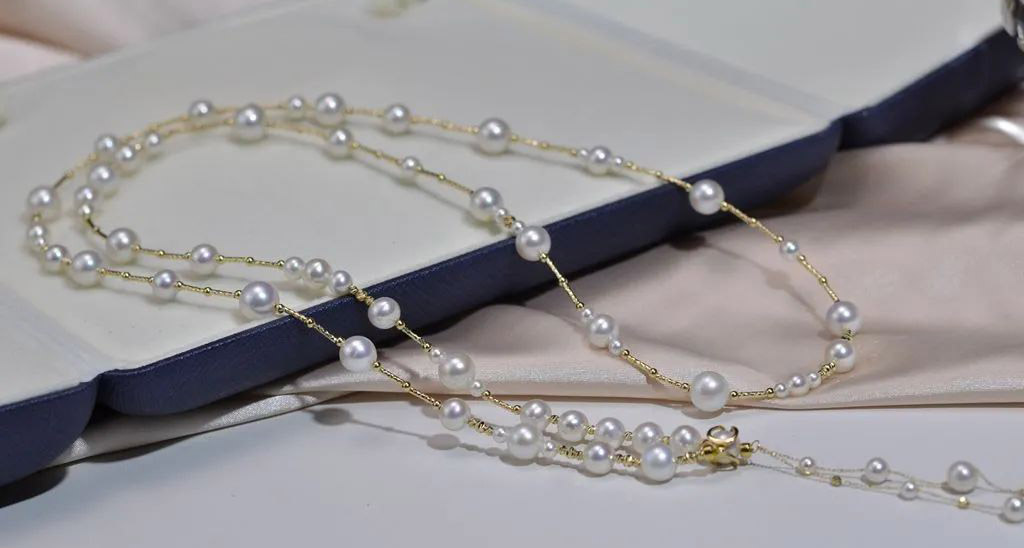
Freshwater AK necklace
The pearl quality of "Freshwater Akoya"
1. Size
The size of "freshwater akoya" is basically in the range of 3-10mm, which is basically the same as that of seawater akoya, and the proportion of pearls exceeding 8.5mm is very small;
2. Gloss
Because the cultivation method is different from the traditional seedless freshwater pearls, its nacre layer is denser and its gloss is better than that of seedless freshwater. The pearls of high quality are not inferior to the high-quality akoya of seawater;
3. Color
Consistent with the color of freshwater pearls, there will be white, orange, purple and other colors, because white is more popular and the proportion of white is higher;
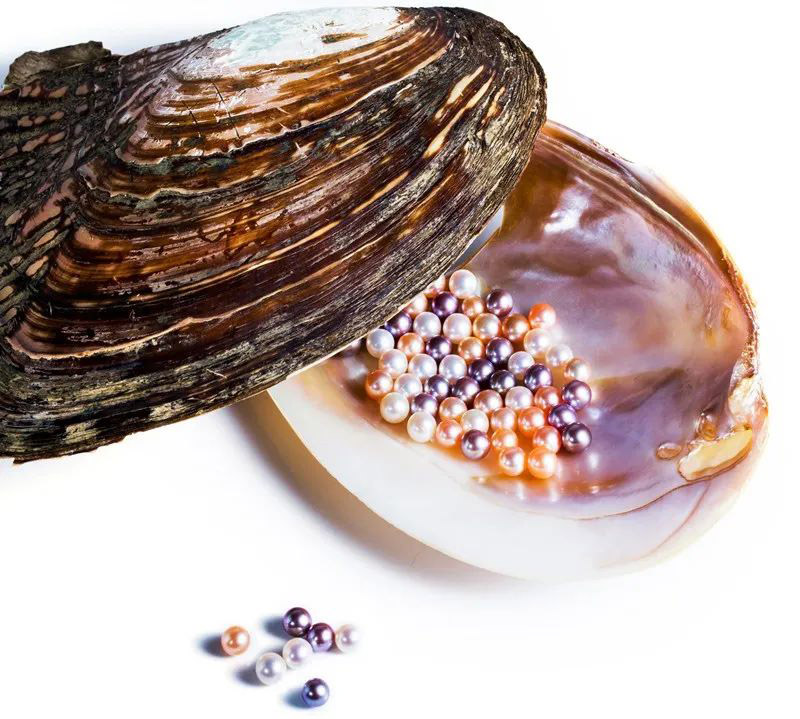
4. Roundness
The proportion of the perfect circle is about one-third, and the roundness is better than that of non-nuclear pearls, and it will have a nearly round and baroque shape;
5. Price
Compared with seawater akoya, the price of freshwater nuclear is very advantageous, and it is only a fraction of seawater at the same quality.
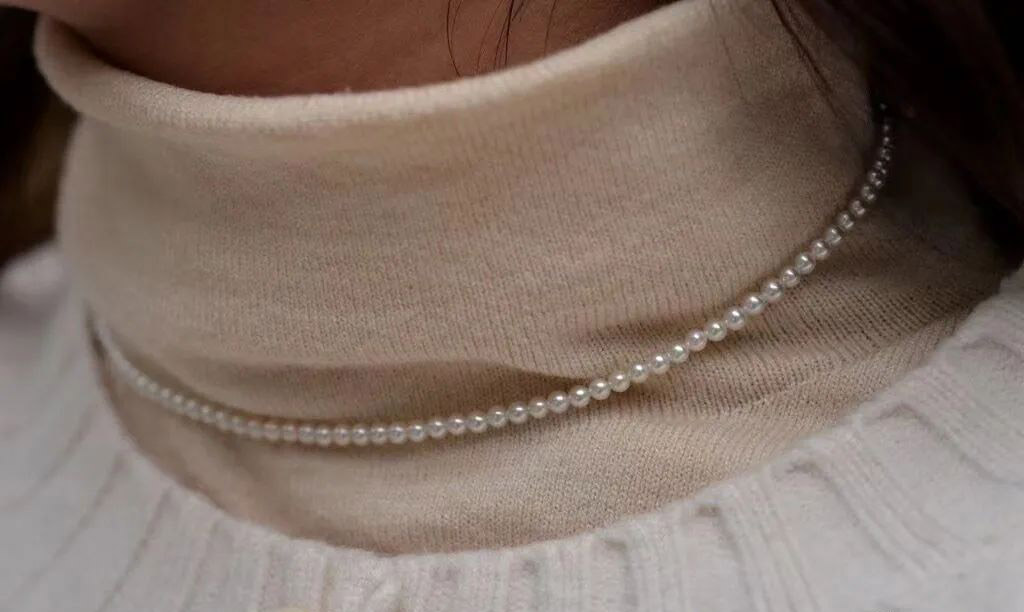
Freshwater Ak necklace natural pearls necklace
"Freshwater akoya" was originally bred to compete with Japanese akoya in the market. It filled the gap in the market for freshwater aurora pearls. After several years of development, the current technology is becoming more and more mature, and Japanese pearl wholesalers are already under pressure. As the price of Japanese akoya increases year by year, freshwater akoya is showing its price advantage more and more.
As a consumer, it is certainly not a bad thing to have one more choice. If you can buy beads with similar appearance for one tenth of the money, why not do it? BAOYUE PAERL provides long-term freshwater akoya with good quality and complete sizes for pearl lovers.
Another major advantage of domestic Akoya pearls is that they can have a very clean surface with almost no growth texture. You must know that the most important identification point of Japanese Akoya pearls is that they have more or less small skin patterns.
For the same pearls with nuclei, seawater akoya purchased for tens of thousands of yuan is not necessarily better than freshwater, because its nacre layer is thin, and the pearls are very delicate. In terms of the thickness of the bead layer, fresh water has more advantages because it has a nucleus. It is generally thicker than the bead layer of Japanese akoya, and compared to the tens of thousands of seawater akoya. It is only one-tenth of the price, but it can wear the same effect.


 WhatsApp Code
WhatsApp Code